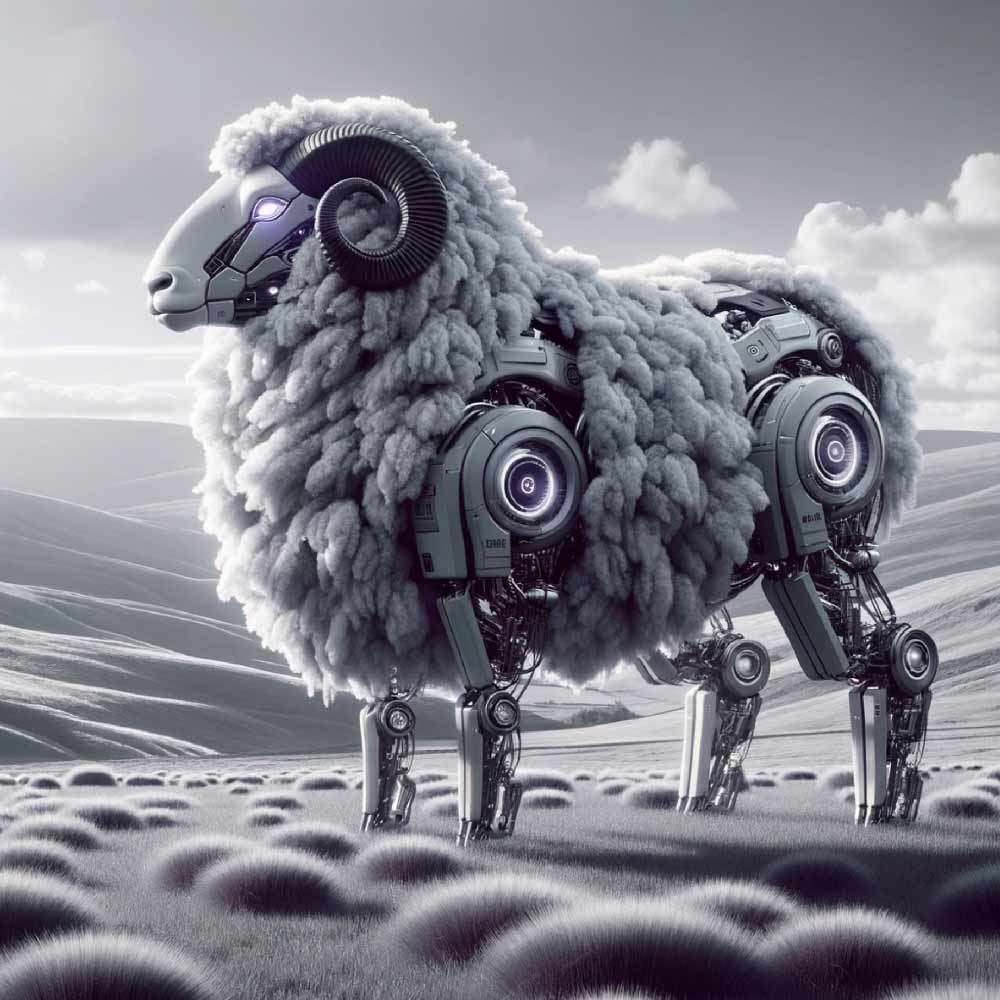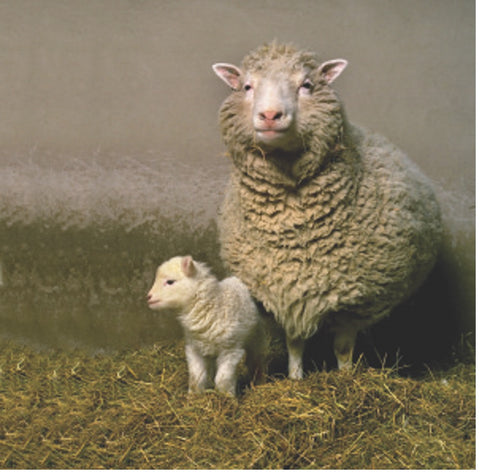- Regular Price
- £19.99
- Sale Price
- £19.99
- Regular Price
- £19.99
- Unit Price
- per

Could Robotic Sheep Conquer the World?
In 1968, celebrated author Philip K Dick famously asked, "Do androids dream of electric sheep?" He was far more prophetic in much of his writing than most could imagine... But robot sheep? Really?
There’s an intrinsic natural simplicity in wool. The essence of ‘wash, weave, and wear’ was the same in 10,000BC as it is today (with some added mechanisation). It’s almost laughably ironic, therefore, that in recent years the industry has been at the forefront of developing technologies that once belonged only in science-fiction.
Cloning, artificial intelligence, and bio-altering enzymes are uncharacteristically complex for the humble world of wool, but offer some remarkable potential benefits.
Attack of the Clones
In July 1996 at the Roslin Institute in Scotland, Dolly the sheep was born. This birth was considered one of the biggest scientific breakthroughs of the decade. Why?
She was a clone.
Dolly was cloned using a technique called somatic cell nuclear transfer, which involved taking a somatic cell from the mammary gland - hence the name, Dolly - of a six-year-old Finn Dorset ewe and transferring its nucleus into an egg cell. This resulted in the development of an embryo that was implanted into a surrogate mother. Dolly went on to birth six lambs, and lived to the ripe old age of six. Her body is now an exhibit at the National Museum of Scotland.
Initially thought to be impossible, Dolly's birth was groundbreaking. Despite sparking a range of ethical debates (like the possibility of human cloning!), the achievement opened the door to a range of possibilities in genetics, biotechnology, and medicine.

The Precursor to Skynet - Artificial Intelligence in Sheep Management
Last week, you may have seen the Prime Minister’s speech on AI (Artificial Intelligence). After taking an optimistic approach and, whilst warning us that society may lose all control over AI akin to the Terminator films, he put forward the potential positives: economic growth and productivity. However, he missed a trick; if he really wanted people to mobilise popular support for the technology, he should have mentioned the potential benefits the technology has for wool!
Australian Wool Innovation, a not-for-profit R&D firm, has found that AI technologies could accurately predict a sheep’s lifetime performance from a young age. Images taken by high resolution cameras are analysed by this artificial intelligence that can accurately predict bodyweight (more weight equals more wool), and body wrinkles (determining susceptibility to fly-strike).
This technology is still very much at the R&D phase, but researchers are confident it will soon be able to assist breeders in their selection process by accurately predicting how certain combinations of genes manifest complex physical traits.
High-Tech Softening Enzymes – Quite A Mouthful
Scotland, too, has a rich heritage in wool – in the 1830s, around 70% of all workers worked in textile manufacturing. Today, there are only a few wool mills left – and a peculiar belief that Scottish wool is only suitable for socks and carpets. This is because flocks reared on the mountainous terrain and windy climate tends to have rougher fleeces. The demand is so low that some Scottish sheep farmers instead use the fleeces as compost.
Research led by the University of Edinburgh are working on a pioneering project to change that.
They are using enzymes to break down coarser fleece typically produced by hill-farmed sheep, making it more suitable for clothing. The goal is to naturally alter wool's structure to produce thinner, softer fibres. This effort aims to utilize Scotland's abundant wool resources, particularly from sheep raised in harsher conditions.
It’s early days yet, but if it becomes commercially viable the technology built off this research could create more sustainable, locally sourced wool production. The knock-on benefits are potentially significant; driving new demand in wool and the revival of Scotland's rich textile manufacturing heritage, increasing the value of Scottish wool, reducing wool waste, creating local jobs, reducing wool miles - all improving the sustainability of wool in many ways and good news for Scottish sheep farmers. Although it is unlikely to increase the number of sheep in the UK, it would use more for the resource they provide, increasing sheep farmers’ profitability, possibly even resulting in reduced need for government support for sheep farming.
Eg. Treated Scottish Wool could soon be used in warm, soft hats
Looking to the Future
So, how long until technology develops to a stage where we see robotic sheep grazing in our fields? Probably a while.
The more immediate possibility is that modern technologies will improve productivity, and even revitalise declining areas of the industry. For me, technology doesn’t threaten the beautiful simplicity of wool, but instead enhances it.
Image credits:
Photo courtesy of The Roslin Institute, The University of Edinburgh, UK: https://dolly.roslin.ed.ac.uk/media/creative-commons-images/index.html
0 comments